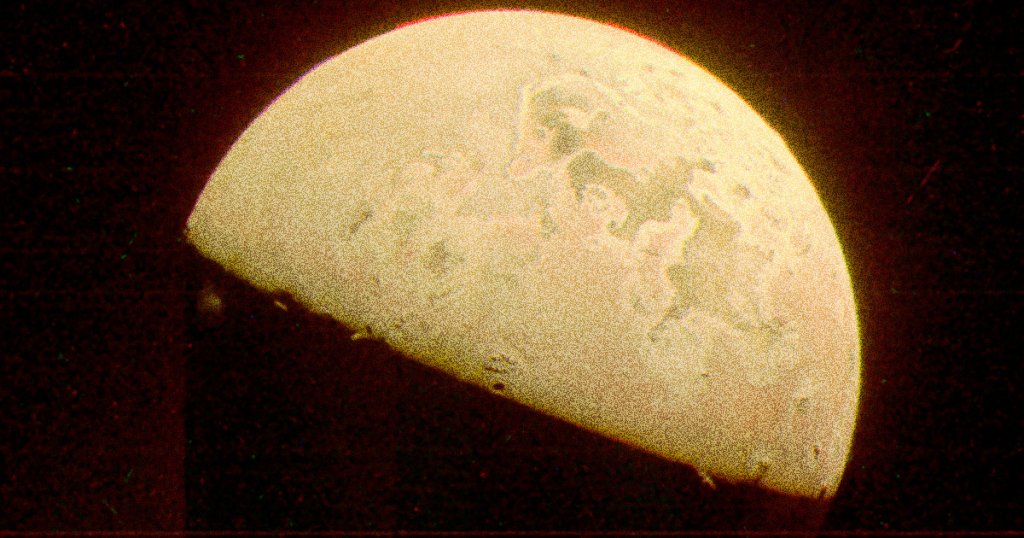“I was in awe.”
Moonlighting
Last week, NASA’s Juno spacecraft performed a scintillatingly close flyby of Jupiter’s moon Io — the closest in over 20 years — and captured breathtaking new images of its evershifting surface that could further scientists’ understanding of one of the most volcanic worlds in the Solar System.
If Juno had pulled off the maneuver around our planet it’d be considered to be well within low Earth orbit and lower than many satellites, its flight coming within approximately 930 miles of Io’s surface. NASA said it expects this rare proximity will generate a “firehose of data” for the craft’s instruments.
It’s already yielded some spellbinding photos. Shown in sharp relief are some of Io’s prominent but lonely mountains set against its vast and empty sulfur-coated plains, which lend the Galilean moon a muddled tinge of yellow and brown. Lakes of lava can also be seen, and even a volcanic plume. The moon’s dark side is visible thanks to sunlight bouncing off Jupiter.
“I was in awe,” Scott Bolton, a physicist at the Southwest Research Institute and principal investigator of the Juno mission, told The New York Times, likening its scattered surface to that of a pepperoni pizza.
A color view of Jupiter’s moon Io, the most volcanically active body in the solar system, captured by NASA’s #JunoMission on Dec. 30. More images at https://t.co/fmQ8weHDSx. Make your own virtual visit to Io at https://t.co/p5UKsgdaja
Image processed by Kevin M. Gill pic.twitter.com/xcbvq9nluy— NASA Solar System (@NASASolarSystem) December 31, 2023
Hot to Trot
As one of the most volcanically active worlds in the solar system, Io is very hot, especially right beneath its crust where astronomers believe it harbors a magma ocean, a suspicion that Juno’s data may confirm.
That heat is amplified, the theory goes, by huge tidal forces. Io is stuck in the middle of a gravitational tug-of-war between Jupiter and its other moons, churning its magma and generating tons of friction, resulting in this so-called “tidal heating.”
Io has no water to speak of, unlike its Galilean cousins, but above ground it trickles with liquid of a very different type. Lava flows are one of the defining features of its otherwise spartan surface, with hundreds of volcanoes that occasionally erupt spectacularly.
That lava constantly seeps to the surface from Io’s molten interior — which would be the suspected magma oceans, seemingly — regularly creating new scars and filling in old ones with lava lakes. What drives these volcanic phenomena and to what patterns they may adhere is something that scientists are using Juno to explore.
“By combining data from this flyby with our previous observations, the Juno science team is studying how Io’s volcanoes vary,” Bolton said in a statement ahead of the flyby’s completion. “We are looking for how often they erupt, how bright and hot they are, how the shape of the lava flow changes, and how Io’s activity is connected to the flow of charged particles in Jupiter’s magnetosphere.”
The spacecraft will take another “ultra-close” look at the planet on Feb 3, which is set to be its 57th flyby of the gas giant in its over seven years in orbit.
More on space: NASA Releases Image of Epic Lines Carved Into Mars’ Surface
Share This Article

